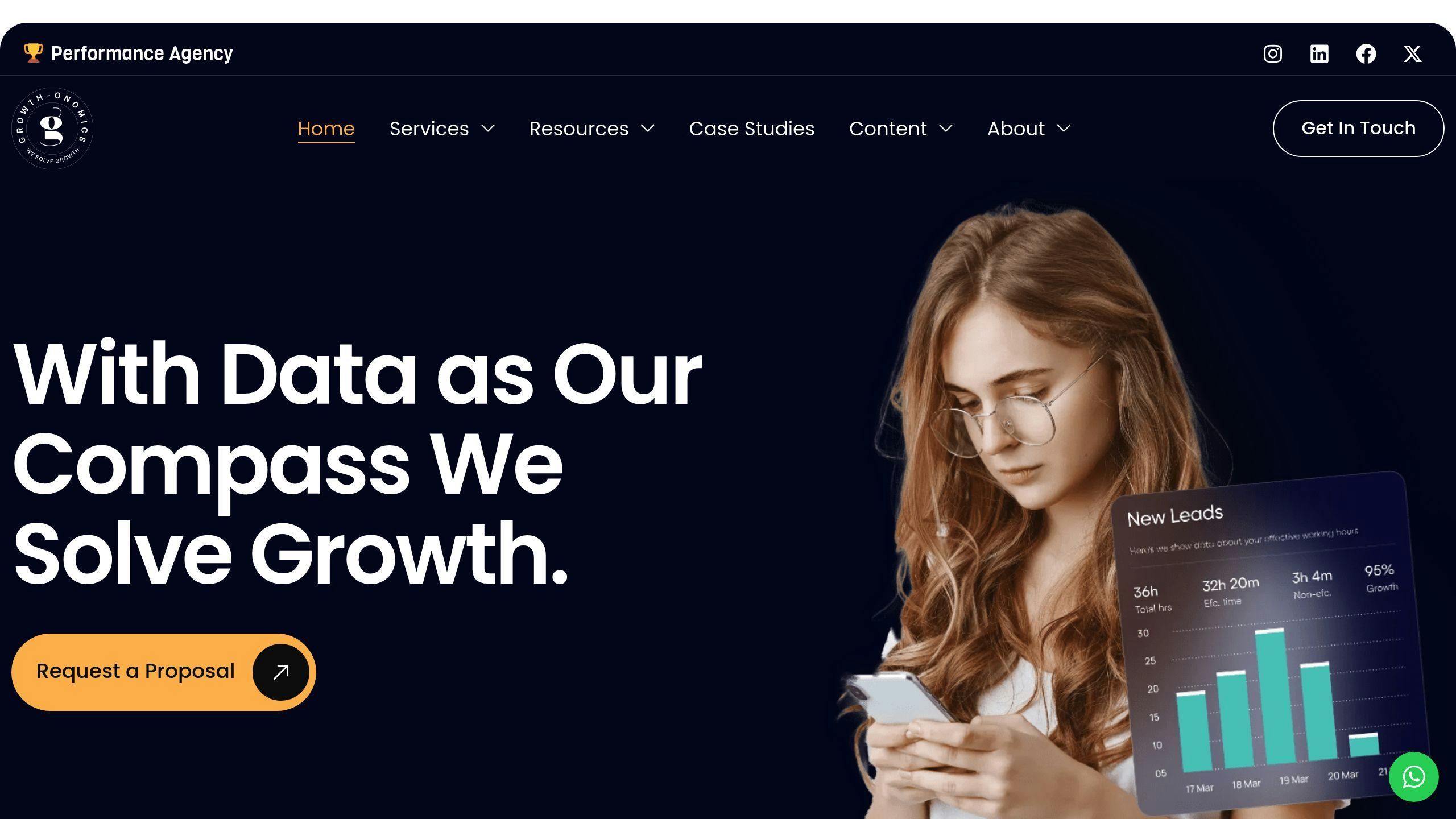Want to know how long users spend on competitor websites? Measuring session duration can reveal engagement trends, industry benchmarks, and opportunities to improve your strategy. Here’s a quick guide:
- What is Session Duration? The average time users spend on a site, calculated by dividing total session time by the number of sessions.
- Why It Matters: It shows user engagement and varies by industry. For example, eCommerce sites average 2m 35s, while Travel sites average 2m 52s.
- Challenges: Privacy laws, mobile vs. desktop behavior, and limited third-party data can complicate measurement.
- Tools to Use: Platforms like SimilarWeb (direct tracking) and SEMrush (indirect insights) help analyze session duration.
- How to Use the Data: Compare with industry benchmarks, identify top-performing competitor strategies, and optimize your content, navigation, and technical performance.
Quick Comparison of Tools:
| Feature | SimilarWeb | SEMrush |
|---|---|---|
| Session Duration Tracking | Direct measurement | Indirect via metrics |
| Industry Benchmarks | Extensive database | SEO-focused data |
| Data Update Frequency | Monthly | Weekly |
Session Duration Basics
What Is Session Duration?
Session duration is the average time users spend on your site during a visit. It’s calculated by dividing the total time of all sessions by the number of sessions within a specific period. To keep the data accurate, analytics platforms stop the session timer after 30 minutes of inactivity, ensuring that idle time doesn’t inflate the numbers [1].
Why Does Session Duration Matter for Businesses?
Session duration varies across industries, reflecting how users interact with websites in different sectors. For example, users tend to spend more time on travel-related sites than on construction-related ones. Here’s a quick look at average session durations by industry:
| Industry | Average Session Duration |
|---|---|
| Travel & Leisure | 2m 52s |
| Education | 2m 51s |
| Health Care | 2m 40s |
| Automotive | 2m 39s |
| Food | 2m 36s |
| eCommerce & Marketplaces | 2m 35s |
| Health & Wellness | 2m 26s |
| Marketing & Advertising | 2m 25s |
| Construction | 2m 23s |
Source: Industry benchmarks [1]
B2C companies often see longer session durations (median: 92.33 seconds) compared to B2B companies (77.61 seconds). These figures are helpful for understanding user behavior and setting benchmarks for improving your website’s performance.
Challenges in Measuring Session Duration
Measuring session duration isn’t always straightforward, especially when analyzing competitors. Here are some common obstacles:
- Third-Party Tools: Competitor data comes from third-party platforms, as direct access to their analytics isn’t possible. Each tool uses different methods, which can lead to inconsistencies [2][4].
- Mobile vs. Desktop: Users often behave differently on mobile and desktop. While mobile engagement has improved with better screen sizes and resolutions, session durations can still vary significantly [1].
- Privacy Restrictions: Data privacy laws limit the amount of competitor data that can be collected ethically [2].
Even with these limitations, there are ways to estimate competitor session durations and use the insights to refine your strategy.
How to Check Traffic of Other Websites
Measurement Tools
Tracking competitor session duration can provide useful insights, and several tools are designed to help with this. Let’s dive into some of the top options available in 2025.
Analytics Platforms
Two standout platforms for analyzing competitor session duration are SimilarWeb and SEMrush.
- SimilarWeb offers detailed traffic analysis and user engagement metrics, making it a solid option for understanding how visitors interact with competitor websites.
- SEMrush, while best known for SEO features, includes technical auditing tools that can uncover session duration trends indirectly.
Here’s a quick comparison of the two:
| Feature | SimilarWeb | SEMrush |
|---|---|---|
| Session Duration Tracking | Direct measurement | Indirect via metrics |
| Industry Benchmarks | Extensive database | Focused on SEO data |
| Data Update Frequency | Monthly | Weekly |
While these platforms excel at providing data, they work best when paired with other tools to round out the picture.
Market Research Tools
Tools like SpyFu and Ahrefs focus on content engagement and backlink performance, offering indirect clues about session duration. These tools help you understand user behavior and how content resonates with audiences.
"Growth-onomics analysts emphasize the importance of choosing tools that balance actionable insights with compliance to privacy laws like GDPR and CCPA."
For a well-rounded view of competitor session duration, combine multiple tools. This approach helps fill in gaps and gives a clearer sense of user engagement trends.
sbb-itb-2ec70df
Measurement Methods
Understanding how long users spend on competitor websites involves combining data from multiple sources and using different analytical methods. Here’s a breakdown of how to approach this effectively.
Traffic Data Analysis
Certain metrics can provide insights into user engagement:
| Metric | Description | Industry Average (2025) |
|---|---|---|
| Average Session Duration | Tracks how long users stay on a site | 77.61 seconds (B2B) [1] |
| Pages per Session | Number of pages viewed during a visit | 2.35 pages |
| Bounce Rate | Percentage of single-page visits | 41-55% |
To get a clearer picture, compare these metrics across various timeframes and user groups. While traffic data offers numbers, adding qualitative research can provide a fuller understanding of user behavior.
User Research
Surveys, interviews, and tools like Hotjar can reveal user habits and preferences, adding context to the numbers. This type of research helps explain why users engage the way they do and validates the quantitative metrics.
"High-quality, relevant content can significantly increase session duration. Assessing content quality involves evaluating factors such as readability, engagement value, and relevance to the target audience." [5]
In addition to user behavior, examining how a website is designed can shed light on what keeps users engaged.
Website Structure Analysis
The design and organization of a website play a big role in how long users stay. Key areas to focus on include:
Navigation Structure: Look at how competitors arrange their menus and content hierarchy. A clear structure makes it easier for users to find what they need, which can extend session duration.
Content Distribution: Study how competitors spread content across their pages, paying attention to:
- Placement of calls-to-action
- Logical flow of information
- Page loading speed
- Clear visual design
Technical elements like fast load times and mobile-friendly layouts are also crucial. Tools such as SEMrush and Adobe Analytics can help analyze these factors while ensuring compliance with privacy standards [3][6].
Using Session Duration Data
Industry Comparisons
Analyzing session duration can reveal how your website stacks up against competitors and industry norms. Don’t just look at direct competitors – broaden your scope to include peers and general industry trends. This approach helps you set benchmarks that matter.
By spotting areas where competitors perform better, you can zero in on improving those aspects of your site to stay competitive.
Website Optimization
Turning session duration insights into meaningful changes requires a focused approach. Start by identifying pages where your competitors outperform you in engagement metrics.
Here are two areas to prioritize:
- Content Engagement: Study competitor pages with longer session durations to see what they’re doing right. For example, if their educational content holds attention, consider creating in-depth guides, tutorials, or resources that keep visitors on your site longer.
- Technical Performance: Session duration can also point to technical issues. Look at how your competitors handle page load speeds, mobile usability, navigation, and content layout. These factors can make a big difference in keeping users engaged.
After making these changes, use the insights to shape a stronger growth plan for your website.
Growth Planning
Keep an eye on how your competitors’ session durations evolve. Sudden increases might signal new tactics you can learn from and apply.
Focus on these three aspects:
- Monitor Trends: Use tools like SimilarWeb and SEMrush to spot patterns in competitor engagement and uncover what’s working for them.
- Segment Analysis: Dive deeper into session duration by breaking it down into user types, traffic sources, or content categories. This helps you understand where competitors excel and where you can improve.
- Combine Metrics: Don’t look at session duration in isolation. Pair it with bounce rates and conversion data to build a well-rounded strategy for optimization.
Legal Guidelines
When analyzing competitor session duration, it’s essential to operate within legal limits. Privacy laws and ethical standards dictate how this data can be gathered and used.
Legal and Ethical Compliance
Privacy regulations like GDPR and CCPA set strict rules for data collection. Breaking these laws can lead to hefty penalties – up to €20 million or 4% of global turnover under GDPR, and $7,500 per intentional violation under CCPA.
Some key rules to follow include:
- Collect only the data you absolutely need.
- Obtain clear user consent before processing any data.
- Anonymize all collected information.
- Use transparent methods for gathering data.
Ethical responsibilities go beyond just following the law. The Interactive Advertising Bureau (IAB) provides guidelines for ethical data practices. Sticking to these standards ensures your competitive research stays responsible and fair.
Public Data Usage
If you’re working with public data, transparency is key. Always document your sources, confirm that tools comply with regulations, and avoid scraping data that’s protected. To ensure accuracy and compliance, consider partnering with trusted data providers who prioritize privacy.
A data breach costs businesses an average of $4.35 million [6]. Proper data handling isn’t just about following the law – it’s about safeguarding your business and maintaining trust. Staying compliant also adds credibility to your competitive analysis.
Summary and Next Steps
Key Takeaways
Measuring competitor session duration requires careful planning while adhering to legal guidelines. To do this effectively, focus on collecting data responsibly, comparing results to industry norms, and making adjustments based on what you learn. Regularly reviewing performance ensures ongoing progress.
Here are the core steps:
- Use analytics tools that comply with regulations to gather reliable competitor insights.
- Benchmark against industry standards to understand where you stand.
- Make informed changes based on the data collected.
- Track trends over time to refine your strategies as needed.
For businesses looking to fully utilize these insights, working with experts like Growth-onomics can help turn raw data into actionable plans.
Growth-onomics Services

Growth-onomics specializes in transforming session duration data into strategies that fuel business growth. Their analytics team uses tools like SimilarWeb and SEMrush to deliver detailed competitive analysis. Their process includes:
- Analyzing user behavior across different traffic sources.
- Developing content strategies based on engagement metrics.
- Improving user experiences through data-backed insights.
- Providing benchmarking reports tailored to specific industries.
This method shows how understanding session duration can lead to measurable improvements. By applying these customized strategies, businesses can make the most of their data and achieve tangible growth.
Optimizing session duration is an essential part of staying ahead in a competitive market and ensuring long-term success.









